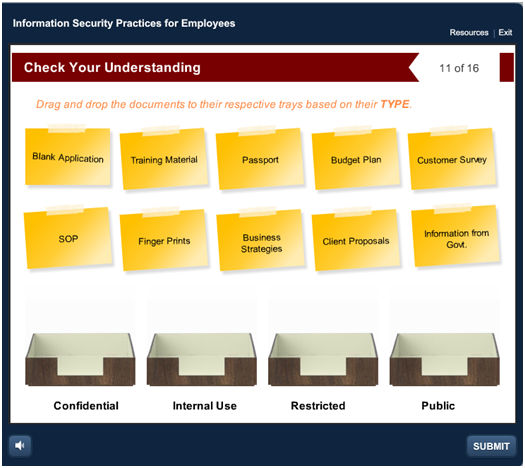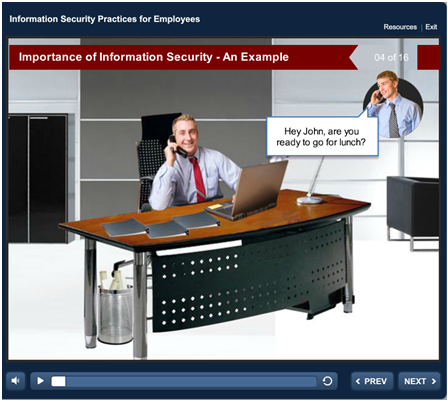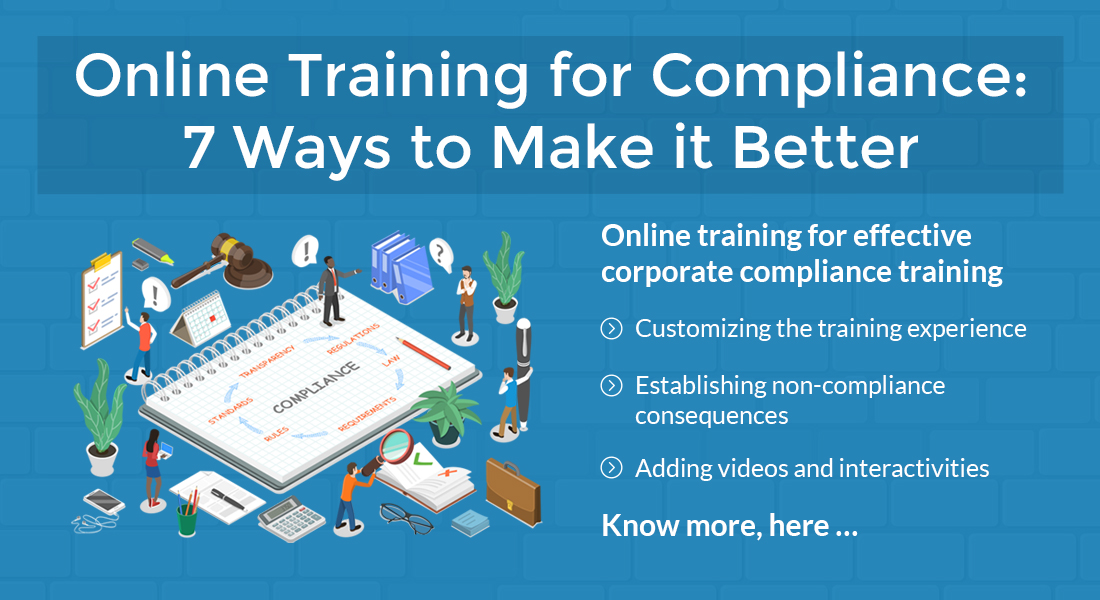Corporate Training: Four Fab Practices for Online Compliance Training

What is the reaction of an employee who is taking a typical online compliance training course? A bored look, repeated yawns, and clicking the ‘Next’ button to get through the course as soon as possible. Unfortunately, there is no escaping compliance training as it is a mandatory part of corporate training.
→ Download Now: State of Learning (Now and Beyond) [eBook]
As for the attitude of employees toward this training, you cannot blame them. Compliance training courses tend to have content:
- That is complex, full of legalese, rules, and regulations
- From the legal perspective, rather than from the employee point of view
- Employees perceive as having no immediate relevance to their jobs
So how do you create a corporate compliance training course that is engaging? How do you make the content interesting and relevant? A little bit of creativity can make this part of corporate training interesting. This blog will talk about some best practices to develop customized online compliance training courses.
Assessments
Assessments serve a dual purpose in compliance training courses. Two types of assessments are included in a compliance training course, pre-assessment and post- assessment. Let us look at the purposes they serve.
Pre-assessment: Before you start online training or any training for that matter, you need to know your audience profile. Whom are you designing the course for? Are they newcomers or experienced employees? In this case, how much knowledge do they have on compliance issues?
This will help you know the level of awareness employees have on compliance topics. Knowing the level of knowledge is important because breaches of compliance rules by employees can have serious implications on the organization’s credibility and finances.
Pre-assessments in the form of surveys and quizzes can give you the results you are looking for. This will help you in the training needs analysis and identify employees with the least awareness of compliance rules and tailor the training modules accordingly.
Post-assessments: These are what you add at the end of the course. For compliance training, they need to be designed in such a way that employees can apply what they have learned. They should cover all the situations employees may come across as part of their jobs. The questions should be challenging and make them assess the situation before they make a choice. Here is a screenshot of an assessment we’ve created for a course on information security.

Feedback is mandatory to the responses employees select. It is important to explain the correct or incorrect choice made by them. This will help them understand the implications of their choice.
Micro modules
Compliance training content is often long and exhaustive, which can overwhelm employees. To make it more engaging and digestible, break the content into short, focused microlearning modules. These modules simplify complex rules and regulations, making it easier for employees to absorb and retain information.
Each module should focus on a single topic to aid memory. For instance, a data security course could include individual modules on data classification, password guidelines, and secure access protocols. By breaking down corporate training materials into smaller chunks, employees can learn more effectively and retain critical points, like compliance rules and guidelines.

A Bird’s Eye View of What Top-Performing L&D Teams are Doin
- Aligning Learning Strategy with Business Strategy
- Developing Business Skills for the Future
- Investing in the Right Technology
- Much More
These modules are also comparatively easy to update than a regular e-learning course. Apart from this, microlearning modules are short and can be accessed through mobile devices, anywhere and anytime.
Gamification
Gamification or using games or game-like elements in compliance training courses can make the courses more engaging for employees. Gamification should have a motive and enhance the learning experience. Here are some ways to incorporate gamification.
Games and simulations: Games can be used as icebreaker techniques to generate employee’s interest in the course.
Simulations can make a course interactive and help the employee accomplish certain tasks. For a course on new employee onboarding for an Electronics Manufacturing Services Company, we used the ‘explore and learn’ technique where the new employees had to explore a virtual building which represented the organization. The elements were created to represent the real building and the employees had to click each element to learn more about them.

Quizzes: Quizzes can be part of a gamified course. They can be inserted after the employee completes a level or a scenario. The questions can assess what he has learned. To add an element of motivation, once the employee takes a quiz, he can assess his performance and receive motivational messages to further improve his score while progressing through the course.
Rewards: Employees can be given rewards in the form of badges and points when they progress through the course. These elements foster healthy competition. . The score of each employee can be shared on networking sites to motivate employees further.
Leaderboards: These can indicate which employee has completed the course in the fastest time or the employee with the most number of correct answers in a quiz or assessment. Securing a place at the top of the leaderboard can motivate employees.
Scenarios
Scenarios mirror the real life situations employees may find themselves in, at the workplace. The situations can be between the employee and his superiors or colleagues, clients, and other people.

Questions based on scenarios should have three or more choices, and the employee can choose the option he thinks is correct. As mentioned earlier, there should be an explanation for the choice made so that he can better understand the law or policy.
In branching scenarios, the employee is given a situation and three or four alternatives from which he has to choose a course of action. For instance, for a course on anti-bribery policy, employees can be given a situation where rules have been violated and then asked to react. To choose their reaction, they can be given 3 to 4 options. Their choice of action will we followed by a clear explanation of whether it is right or wrong. This will make the rule clear to them.
Branching scenarios help employees make choices and also understand the impact of their choices. They help them learn from the mistakes made in a virtual environment instead of committing them in a real environment and facing negative consequences.
Compliance courses, mandatory in corporate training, need not be dull and boring. Customized e-learning courses with well-defined assessments, micro modules, gamification, and scenarios can pep up these courses. Learn how e-learning can help develop engaging compliance courses in this free e-book and help your employees stay compliant. Download now!





